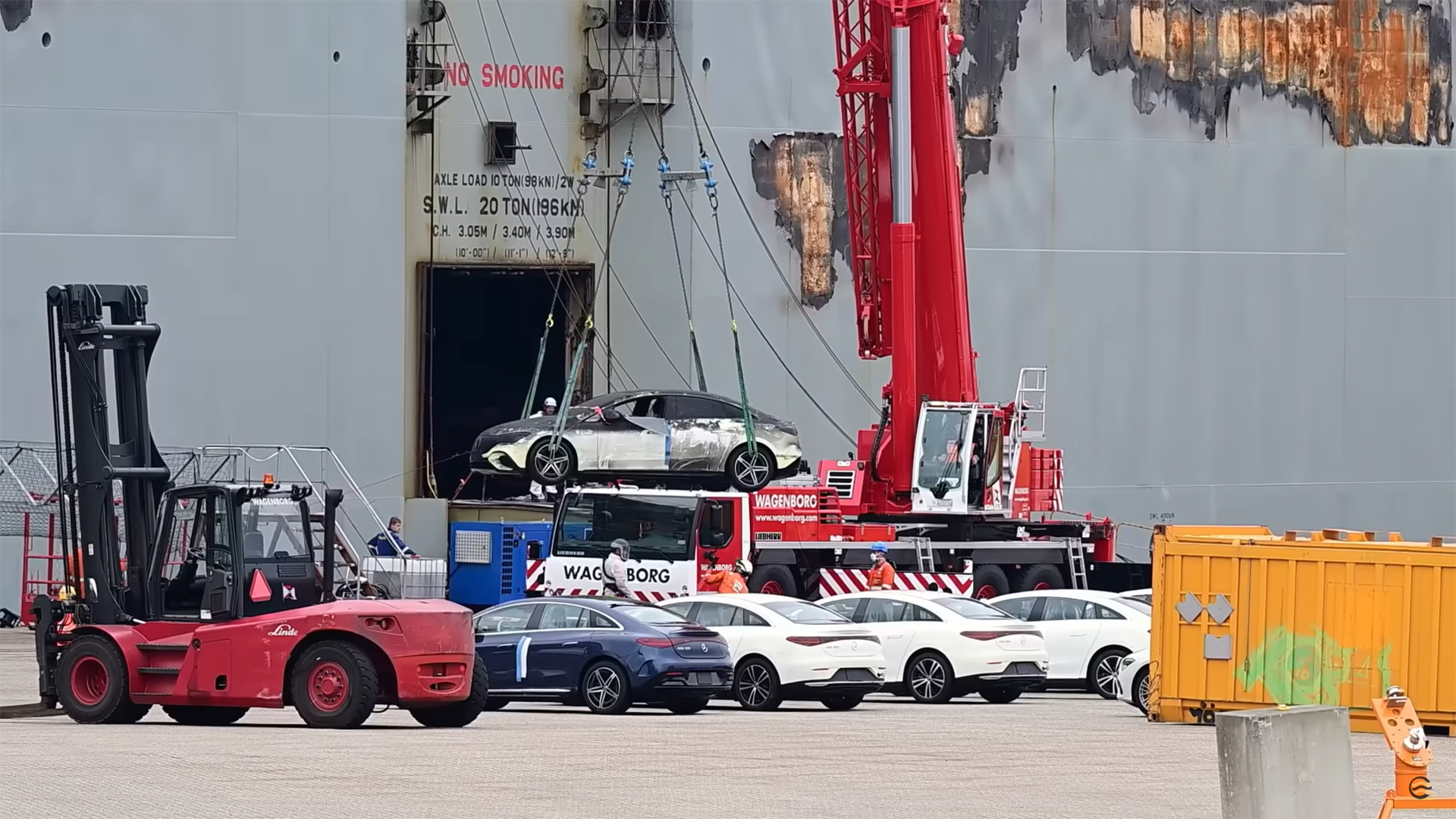The operation to unload vehicles from the Fremantle Highway cargo ship, which burned down at the end of July 2023, is continuing. For the responsible team, all is not a long calm river. One of the electric vehicles discharged in recent days (re) caught fire as it left the ship.
The teams in charge of evacuating the vehicles were prepared for this eventuality. From the start of operations, everything was put in place to limit the risk of the fire reigniting for vehicles still in good condition. Despite the precautions implemented, the start of a fire could be observed on one of the electric vehicles extracted from the Fremantle Highway cargo ship on August 30, 2023. This scene, filmed by the site eemskrant.nl, allows us to understand to what extent the mission requires constant attention.
Since August 19, the teams on site have been unloading the electric and thermal vehicles still in good condition from the burnt cargo. According to estimates, around 1,000 vehicles were still deemed to be intact. Under the gaze of the local media, the first vehicles rolled out after being washed on board. The more the days pass, the more the operations around the cargo get tougher.
A Mercedes EQE will finally not have a second chance
On the video of the Dutch site, we can thus witness the unloading of a cargo of Mercedes EQE, one of the 100% electric and top-of-the-range sedans (from 70,000 €) of the German brand. The vehicles appear to be in good condition, but unlike previous evacuations, the vehicles no longer exit through the freighter ramp. These vehicles are craned to reach the mainland.
It is one of the Mercedes EQEs unloaded that day which must quickly be put away from the other cars. The electric vehicle, initially white, is already blackened by traces of fire when it is craned onto the platform. While in the air, it is possible to see that the flat bottom of the car looks gutted. It is impossible to know if the vehicle was already in this state following the initial fire, or if the fire started or smoldered until it was time to move the vehicle into the freighter to extract it. In any case, the risk of fire was anticipated, because a special container appeared on the quay shortly before the extraction of this particular vehicle.
A resumption of fire quickly brought under control
Even before the first wisps of smoke are perceptible in the video, the car was placed in a half orange container, placed on the quay to drown the vehicles threatening to (re) catch fire. It is once he is installed inside that the smoke begins to become more and more visible.
The rescue teams seem perfectly familiar with the procedure. We see people equipped with protective suits come to fill the container with water, then cover it with a tarpaulin to smother the fire. Once covered, the smoke seems to escape from the installation and the unloading operations continue as if nothing had happened.
The support was quick and efficient. It was perhaps not the first vehicle to have to take a bath, in addition to the shower initially set up to wash the vehicles of the toxic residues of the fire.
The first estimates indicated that a good week would be necessary to evacuate all the vehicles in good condition. It looks like the task is taking longer than expected. In any case, the mission does not lack twists and turns.
Don’t miss our weekly Watt Else appointment. Every Thursday, receive our editorialized newsletter on all topics relating to electric mobility (and even electric cars traveling on cargo ships).
Subscribe to Numerama on Google News to not miss any news!
